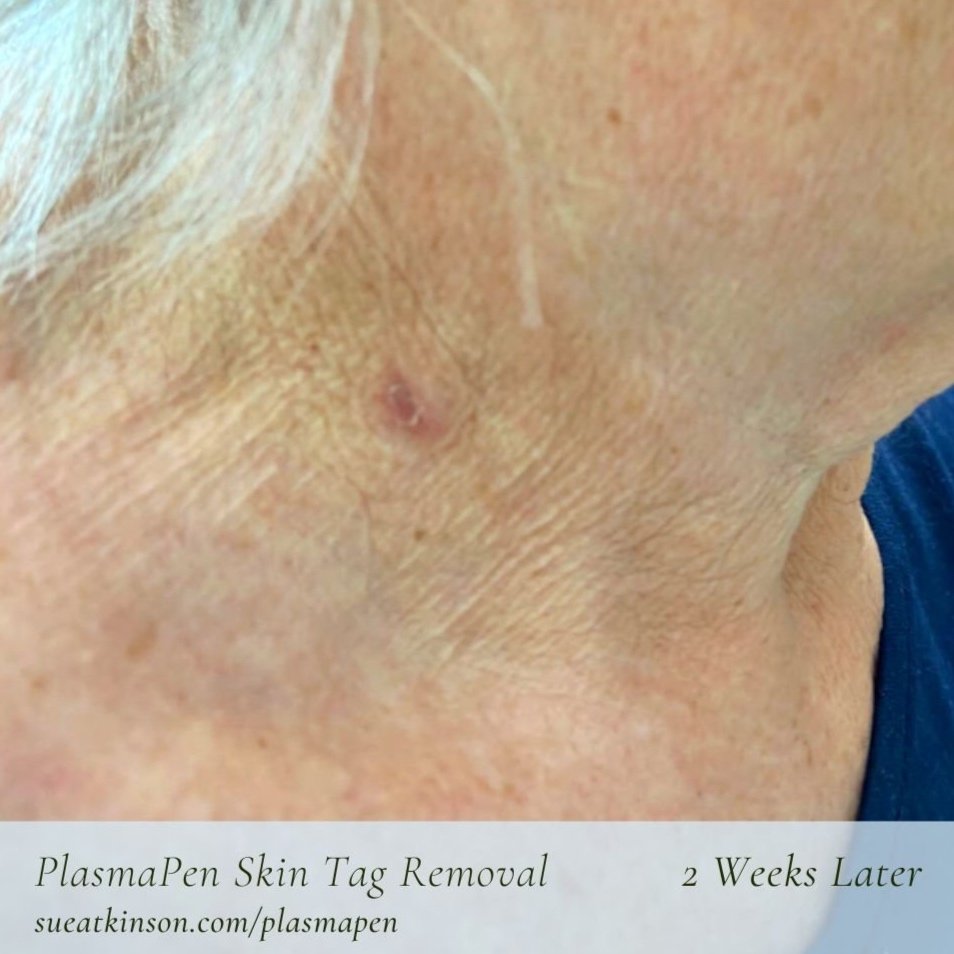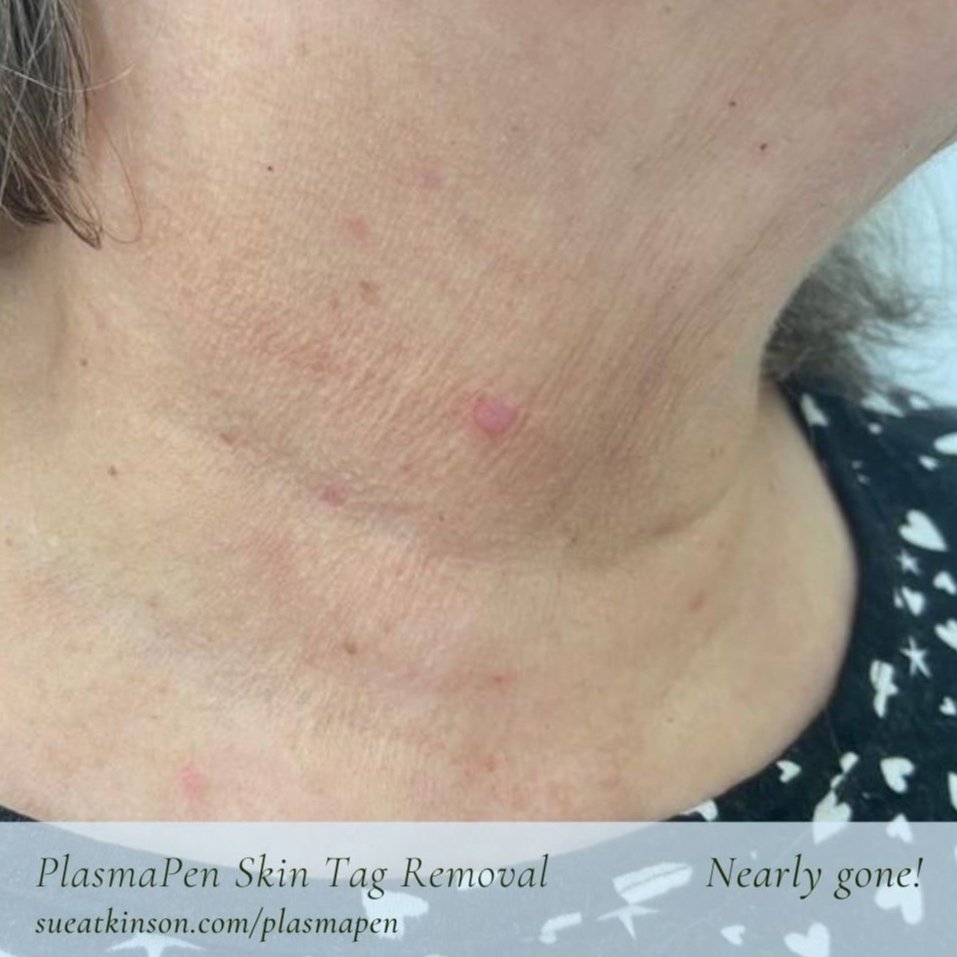Amazing Skin Tag Removal with PlasmaPen
We’re delighted for our client who’s finally banished a large skin tag that she’s had for years. She didn’t think there was anything that could be done with it, but then she came to Sue Atkinson Aesthetic & Wellness Clinic in Sheffield…
Read on to learn about Skin Tags and our process of removal.
What are Skin Tags?
Skin tags are small, soft, skin-coloured growths on your skin. They can vary in colour and size – from a few millimetres up to 5cm wide. Skin tags are usually found on the neck, armpits, around the groin, or under the breasts. They can also grow on the eyelids or under the folds of the buttocks. They can look like warts, but skin tags are usually smooth and soft (warts tend to be rougher with an irregular surface), knobbly and hang off the skin (warts are usually slightly raised or flat) and not contagious (warts spread very easily, so a sudden outbreak or cluster of growths is more likely to be warts). Skin tags do not usually cause any pain or discomfort.
Why skin tags occur
Skin tags are made of loose collagen fibres and blood vessels surrounded by skin. Collagen is a type of protein found throughout the body. Both men and women can develop skin tags. Pregnant women may be more likely to develop skin tags as a result of changes in their hormone levels. Some people develop them for no apparent reason. Skin tags tend to grow in the skin folds, where the skin rubs against itself, such as on the neck, armpits or groin. This is why they tend to affect overweight people who have excess folds of skin and skin chafing.
When skin tags can be a problem
Skin tags are harmless and do not usually cause pain or discomfort. However, you may consider having skin tags removed if they're affecting your self esteem, or if they snag on clothing or jewellery and bleed. You'll usually need to pay to have this done privately. This is because skin tag removal is regarded as cosmetic surgery, which is rarely available through the NHS. Cosmetic surgery is usually only available on the NHS if the problem is affecting your physical or mental health.
Source: NHS.uk
Our PlasmaPen Procedure
Our client Carole has had a large skin tag on her neck for as long as she can remember - and it’s only got bigger over the years. Cosmetic Surgery can seem like a big (and expensive) procedure, but with PlasmaPen at Sue Atkinson Aesthetics & Wellness Clinic Sheffield, skin tag removal is possible for everyone.
“Sue removed a rather large skin tag for me today and I am thrilled. I was a little apprehensive to start with, but Sue talked me through the whole process and made sure I was comfortable throughout. I needn’t have worried: it was totally painless. I know it will take a few weeks to heal, but I can’t wait to see my neck without its unsightly blob!”
Carole
Before
In the ‘before’ photo, you can see that the skin tag was a large one - large enough to be visible and for jewellery to catch on it. It’s perfectly normal for anyone to feel like they may wish to have this skin tag removed. Although skin tags (acrochordons) are (usually) small, noncancerous growths that tend to be the same colour as your skin (they often look like a cluster of skin tissue extending out from a tiny stem), they often cause problems for people; cosmetically, physically and mentally.
Our PlasmaPen Skin Tag Removal Procedure
During the procedure our expert Sue Atkinson gently and efficiently removed the Skin Tag using the tool (similar to a small needle), by applying small dots to the affected area. With a skin tag this large, a slightly different approach was employed, which only an experienced technician like Sue can do.
Immediately After
You can see that afterwards, the large lump was completely gone. This did, of course leave a mark where it had been, and this can look scary or like something had gone wrong, however these signs of healthy blood flow are positive.
After 2 Weeks
Here we see brilliant results! Only two weeks later the skin tag has completely gone, leaving no bump or excess skin tissue. The wound is healing nicely.
Nearly Gone!
A further consultation a couple of weeks later shows that all signs of the skin tag have nearly disappeared - and this small pink mark will disappear in time. No one would ever know what was there before.





